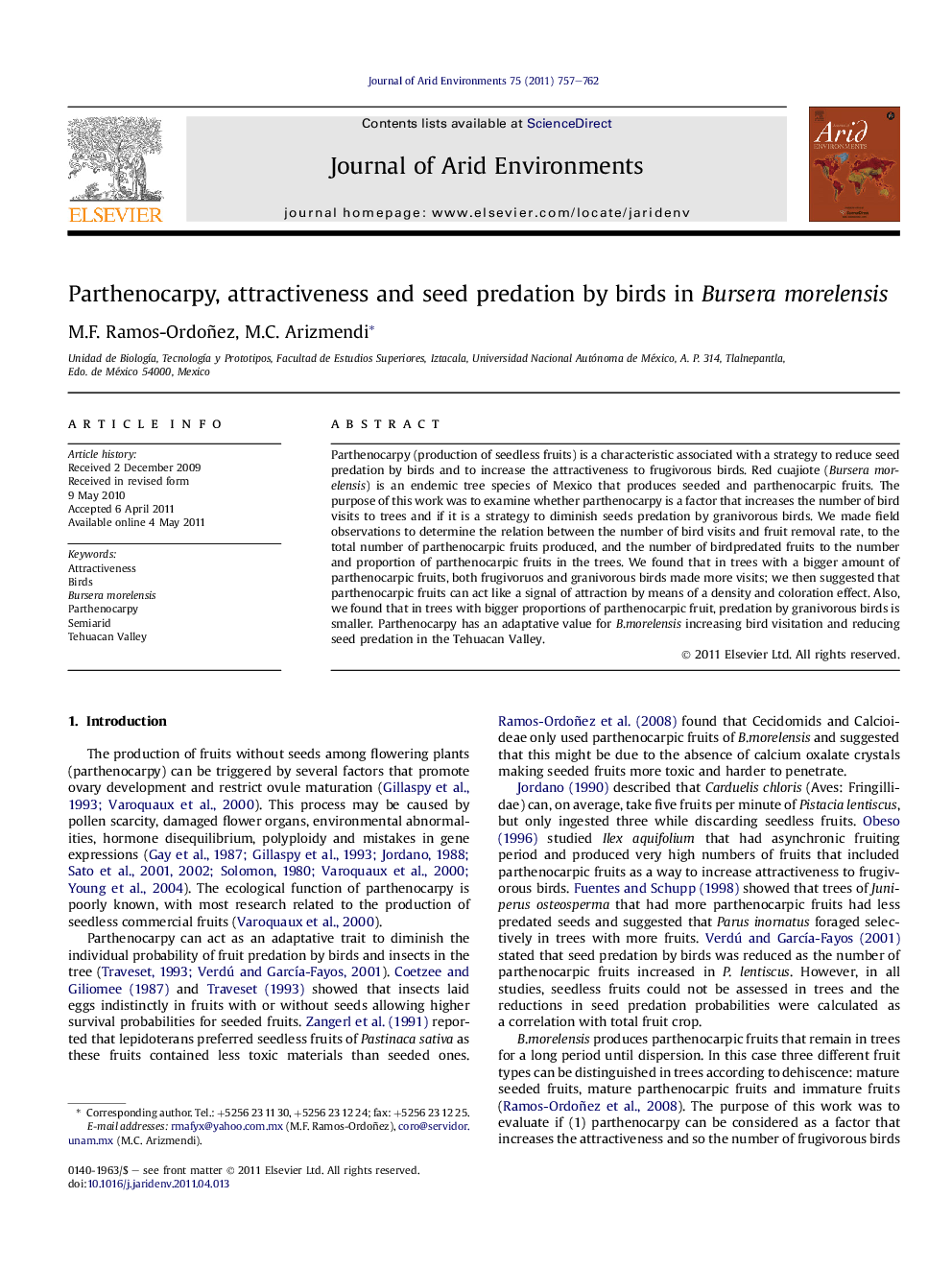| Article ID | Journal | Published Year | Pages | File Type |
|---|---|---|---|---|
| 4393619 | Journal of Arid Environments | 2011 | 6 Pages |
Parthenocarpy (production of seedless fruits) is a characteristic associated with a strategy to reduce seed predation by birds and to increase the attractiveness to frugivorous birds. Red cuajiote (Bursera morelensis) is an endemic tree species of Mexico that produces seeded and parthenocarpic fruits. The purpose of this work was to examine whether parthenocarpy is a factor that increases the number of bird visits to trees and if it is a strategy to diminish seeds predation by granivorous birds. We made field observations to determine the relation between the number of bird visits and fruit removal rate, to the total number of parthenocarpic fruits produced, and the number of birdpredated fruits to the number and proportion of parthenocarpic fruits in the trees. We found that in trees with a bigger amount of parthenocarpic fruits, both frugivoruos and granivorous birds made more visits; we then suggested that parthenocarpic fruits can act like a signal of attraction by means of a density and coloration effect. Also, we found that in trees with bigger proportions of parthenocarpic fruit, predation by granivorous birds is smaller. Parthenocarpy has an adaptative value for B.morelensis increasing bird visitation and reducing seed predation in the Tehuacan Valley.
► B.morelensis produces seeded and parthenocarpic fruits. We examine the function of parthenocarpy on seed predation and bird attractiveness. ► Trees with bigger proportions of parthenocarpy have lesser predation and more visits. ► Parthenocarpic fruits attract birds by means of a density and coloration effect. ► Parthenocarpy reduces seed predation by birds and increases the attractiveness.
